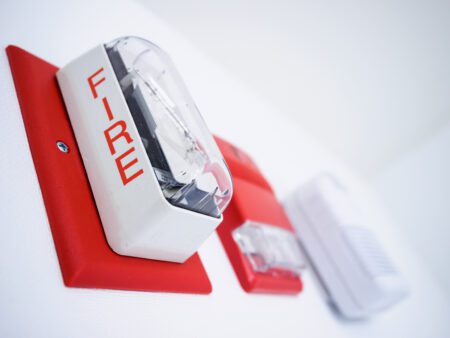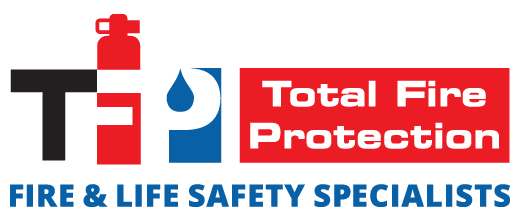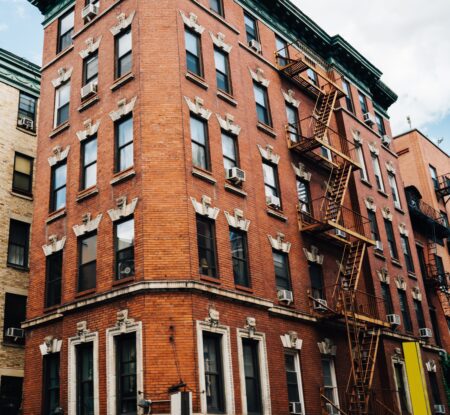When you think of the potential for a fire to occur in your building, you may focus a lot on the fire safety systems you have in place and what products you should obtain to keep the premises fire-safe. However, did you know that there are fire ratings to consider? Knowing the fire resistance ratings and fire protection ratings of your commercial building will help you pick the right products to keep your building and the people in it safe. Here are the different types of fire ratings you should know about.
Types of Fire Ratings
Fire ratings exist in different forms, including fire resistance, fire protection, flame spread and smoke developed, and various class ratings. Here’s what each rating means and the significance surrounding these fire safety classifications:
Fire Resistance Ratings
Fire resistance ratings are related to the building construction and how the structure responds in the case of a fire. According to the NFPA, there are five types of fire resistance ratings:
 Type 1: Buildings 75+ feet tall, such as high-rise buildings and commercial spaces. These types of buildings are designed so that they can resist high temperatures.
Type 1: Buildings 75+ feet tall, such as high-rise buildings and commercial spaces. These types of buildings are designed so that they can resist high temperatures.- Type 2: Newer commercial buildings, shopping malls, and schools are often Type 2 buildings, and they’re often made of non-combustible materials.
- Type 3: Brick-and-joist structures, such as residential homes, that often contain combustible materials, including wood.
- Type 4: Churches, factories, and barns often fall within the Type 4 fire resistance rating category, as these buildings are made primarily of lumber.
- Type 5: The wooden frame buildings that fall under the Type 5 category are the most combustible with regard to all fire resistance ratings.
The one-hour fire wall test is used in fire resistance ratings. Different materials are tested to see if they can withstand the elements of a fire for one hour. Most buildings require this one-hour fire rating as a minimum level.

Fire Protection Ratings
Fire protection ratings relate to the materials and construction within a building. For example, fire doors, windows, and dampers are rated to show how well these items protect in the case of a fire. There are standards for fire tests of fire doors, windows, and dampers that must be completed in order to show the reliability of these items in protecting areas of the building from smoke and flames. It’s important to have these tests completed and know how well your fire doors, windows, and dampers will work, depending on their rating, should a fire occur.
Flame Spread and Smoke Developed Ratings
The building should also have a flame spread rating and smoke developed rating test performed. These tests determine how likely it is that the flames will spread and that a high level of smoke will develop due to the materials within the building. A higher flame spread rating means it’s more likely that the tested material will spread flames and the higher the smoke developed rating, the more smoke an item will generate.
Class A, B, & C Fire Ratings
There are also classes of fire ratings, including Class A, Class B, and Class C. These fire ratings are determined by the flame spread index and smoke development rating. Here’s information on each class, including what the flame index and smoke development rating are for each one:

- Class A: The Class A rating is the best fire rating. The flame spread index is 25 or less, and the smoke development rating is no more than 450. Many commercial buildings are required to be Class A buildings. Hospitals are one example of Class A buildings.
- Class B: The Class B rating has a minimum flame spread index of 26 and a maximum of 75, while the smoke development rating must be 450 or less.
- Class C: The Class C rating has a flame spread between 76 and 200 with a maximum smoke development of 450.
The fire rating test shows what class your building falls within and measures to take to ensure your building is protected and the people within it are safe.
When you know the fire ratings of your commercial building, you can make sure your building is up to code and you follow local regulations as well as ensure the safety of the people within the building.

 Type 1: Buildings 75+ feet tall, such as high-rise buildings and commercial spaces. These types of buildings are designed so that they can resist high temperatures.
Type 1: Buildings 75+ feet tall, such as high-rise buildings and commercial spaces. These types of buildings are designed so that they can resist high temperatures.


